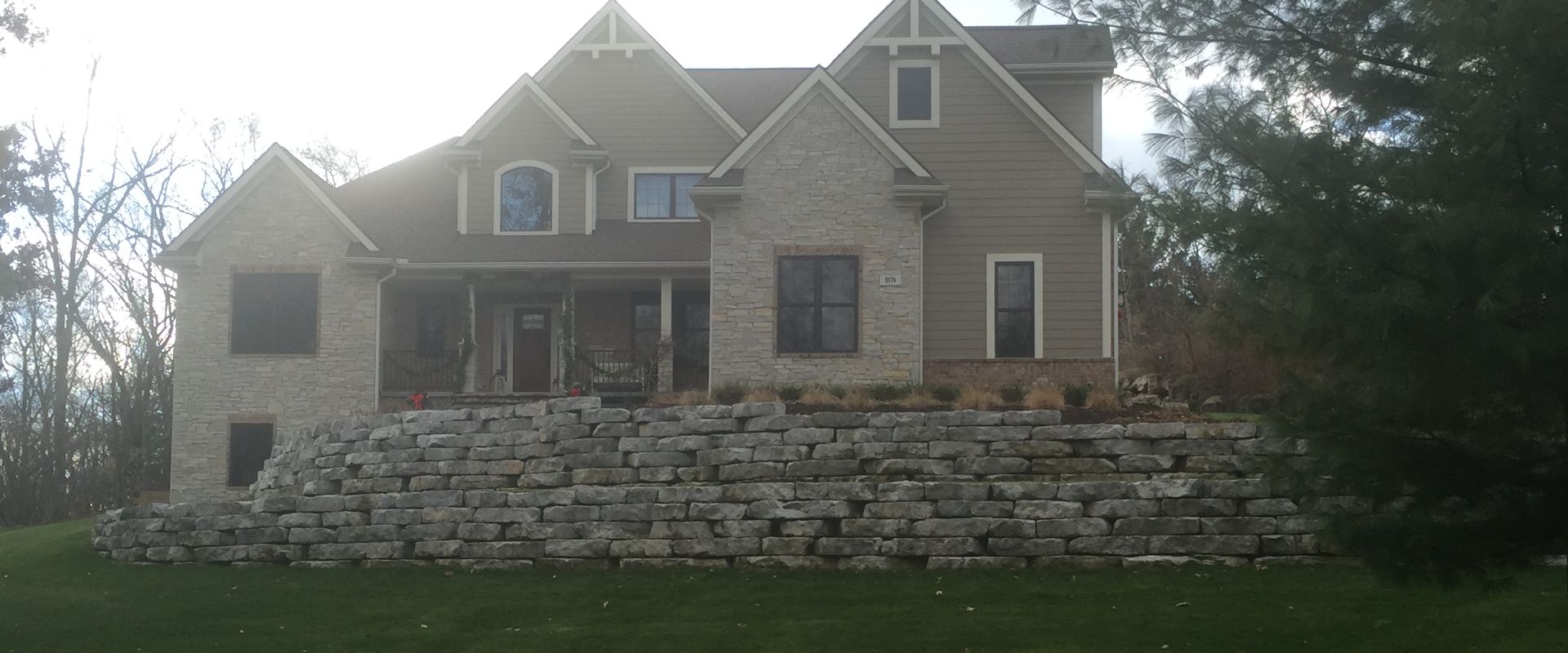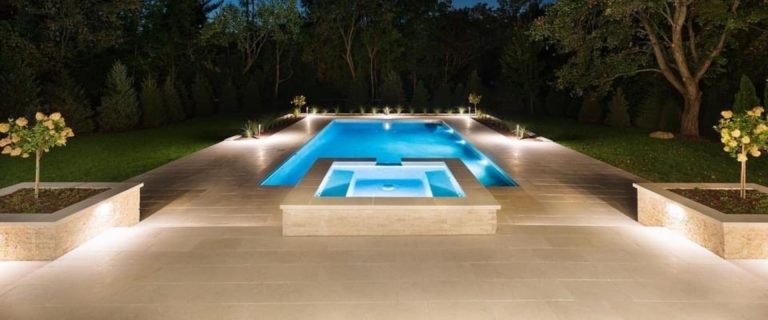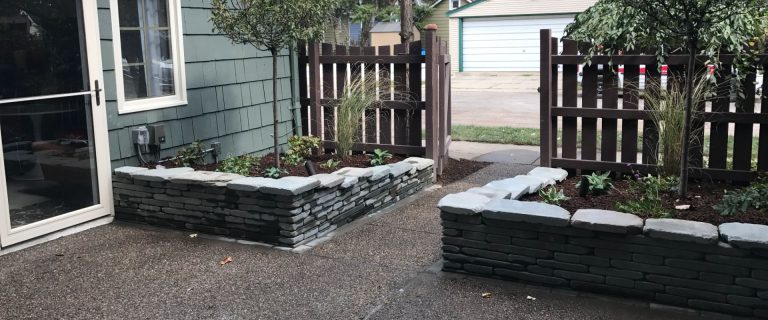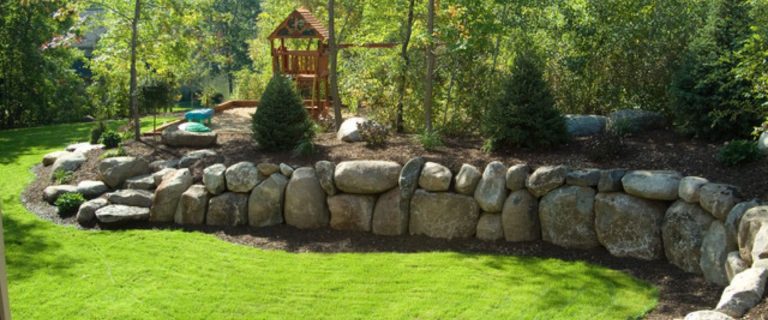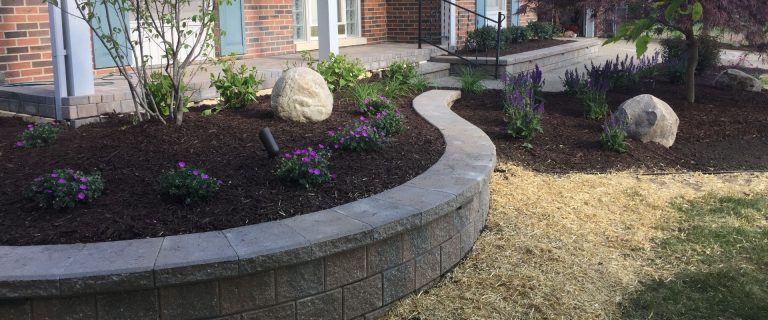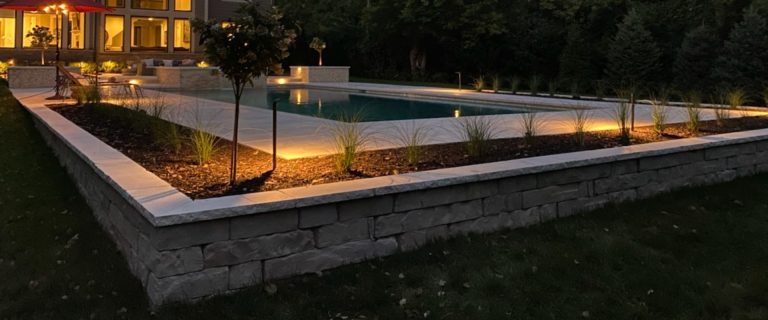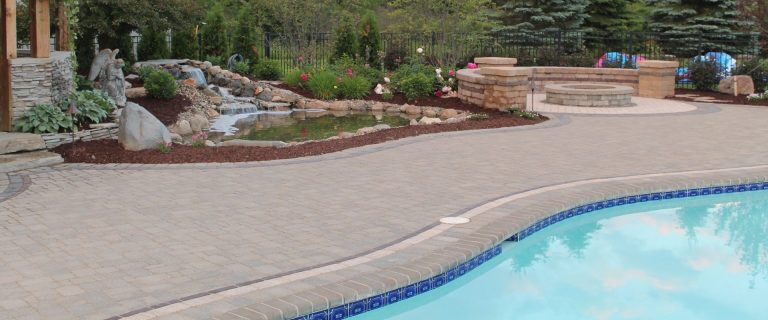5 Things Every Shelby Township, Michigan Homeowner Should Know Before Building A Retaining Wall
5 Things Every Homeowner Should Know Before Building A Retaining Wall
Retaining walls are a great way to add value and increase the curb appeal of your home. They can help you create more usable land if you have a sloped property and they can also be used to prevent erosion of soil or water run off. Unfortunately, without proper planning and construction, they can end up costing you more money than you had planned on spending. A lot more!
So, before building a retaining wall on your property here are five things that every homeowner should know about retaining walls:
1) Retaining Walls & Permits:
In most counties or municipalities retaining walls over 4 feet in height usually need to have approval from an engineer and will require a building permit. If you keep the retaining walls under 4 feet in height then a building permit is generally not required. Tiered walls can also be built to negate the need for a building permit, if for example you had a small slope in your backyard instead of building one 6 foot high retaining wall you could build two 3 foot high “tiered” retaining walls to create a “stepped” effect in your backyard. Tiered walls can create many opportunities to add additional interest to your yard not just from the wall itself but they can be used to carve out spaces for gardens, trees, shrubs, or even a water feature.
If you’re looking to have a retaining wall built we can provide you with a consultation where we come out, look at your property, discuss your ideas, and come up with a solution to make it happen. If your retaining wall needs a permit for construction we can handle all of those details for you.
2) Choosing The Right Retaining Wall Materials
Retaining walls can be built using many different materials including natural rock, landscape blocks like Allan Block or VERSA-LOK (which come in many different styles), boulders, and even timbers. The type of material you choose for your retaining wall will depend on what’s best suited to the size of your project, your overall budget as well as accessibility considerations. We don’t want to be hauling huge boulders into your tight and hard to access backyard if we can’t get a mini-excavator in as an example.
The benefit to using materials like Allan Block or VERSA-LOK is that these are engineered systems. You can be provided engineered drawings that can be used to acquire your building permit which eliminates the need for an engineer to design the wall system. These “segmented” retaining wall systems also come in a wide variety of block styles and colors too.
If you want to keep a “natural” look about your property then nothing beats the commanding look and long-term durability of a big boulder retaining wall. The placement of large boulders is done using an excavator with a thumb attachment so the boulders can easily be put into place.
If your retaining wall is very low to the ground or you just want to provide a decorative edge around a driveway or some garden beds then landscape ties or timbers are an excellent and affordable choice.
3) Understanding Retaining Wall Surcharges
If you want to install a functional, aesthetically pleasing retaining wall system that will work to keep your property stable and secure without compromising its natural beauty you need to understand retaining wall surcharges.
No, it’s not an “extra-cost” in the case of a retaining wall the “surcharge” is the additional weight above and beyond the soil the wall is holding back. For example, many homeowners build retaining walls to carve out flat parking areas for their boat or an RV or extra vehicles. The weight of the RV, boat, or vehicle is a wall “surcharge” and your retaining wall needs to be engineered to handle that additional weight. Other sources of wall surcharge could be a shed or a fence or a concrete or paver patio.
Knowing what’s going “on top” of the reclaimed flat land a retaining wall system creates is important to having a structure that’s built to stand the test of time. It’s important to communicate with your landscaping contractor and let them know exactly what you intend to do with the wall. They may have to bring in different base or back filling materials and may need to also use “geogrid” to strengthen the integrity of the retaining wall.
Geogrid is a geo-synthetic material that is commonly made out of one or more polymers. It is used to reinforce the soil behind your retaining wall. Geogrid is installed in layers between each course of your wall and extends into the soil behind your wall. Geogrid greatly stabilizes the soil and extends the retaining capaShelby Township, Michigan of the wall if you intend to place a surcharge on top of the wall or in close proximity to the wall.
4) Proper Drainage For Your Retaining Wall
Rebuilding retaining walls that have failed is always a great source of business for any landscaping contractor because there are a ton of them out there! The number one cause of retaining wall failure could easily be the lack of proper drainage systems. Retaining walls are designed to hold back earth and soil, right? So what do you think happens when it rains really hard for a few days? All of that soil and earth that your wall is holding back becomes extremely heavy from the added weight of the water behind it. This is hydrostatic pressure and it’s a devastating force against a retaining wall without proper drainage.
Good drainage for a retaining wall usually starts with having a proper base for the wall. The base is usually dug out to a depth of at least the height of the first course of the wall. So, if you were using landscape blocks and they were 10 inches in height, you’d likely want your base trench to be at least 10 inches in depth. This allows for the installation of proper drainage rock and the retaining wall blocks can be leveled on top of the drain rock.
As retaining walls get higher they need additional drainage and that can be in the form of french drains either behind or at the base of a wall and also weep holes can be installed or the drainage system recommended by the wall manufacturer if you’re using one of the pre-engineered systems.
Using the correct backfill behind the wall is also important. Ideally you should be using a granular fill like gravel or gravel with concrete fines for some extra strength. The gravel makes it easier for the water to find it’s way to the wall drains whereas a more clay-based or dense soil would soak the water up and build up hydrostatic pressure that could cause your wall to fail.
5) Choosing The Right Contractor To Build Your Retaining Wall
There are literally dozens and dozens of landscapers in our area that claim they can install retaining walls. How do you know who to choose to build your wall?
The first thing to look for is that they are licensed and insured. You don’t want to be on the hook if they cause damage to your property or worse to a neighbors property.
The second thing to look at is their previous work! Do they have photos of retaining walls they’ve built on their website? Are you able to speak with any of their past clients? Retaining walls aren’t cheap or easy to install, they can be fairly involved projects so if you have the opportunity to speak with a referral take it! You’ll either get a glowing recommendation or they’ll be honest with you and explain any of the problems they had working with that specific contractor. At any rate, you’ll learn a lot and feel more confident with your choice.
Lastly, has the contractor or their employees taken part in any manufacturers training? All of the engineered retaining wall manufacturers offer installation courses through local building supply companies so a contractor can become certified with their particular products. These certifications are important and can often affect any warranty that is available to you after the installation is complete.
Do You Need An Estimate For Your Retaining Wall Project?
If you have a sloped property or you’d like to build retaining walls for garden beds or to accentuate other landscape features we’d be happy to provide you with an estimate or consultation for your project.
To schedule your retaining wall consultation Call 586-739-6646 or fill out our online estimate request form and we’ll be in contact with you shortly.

